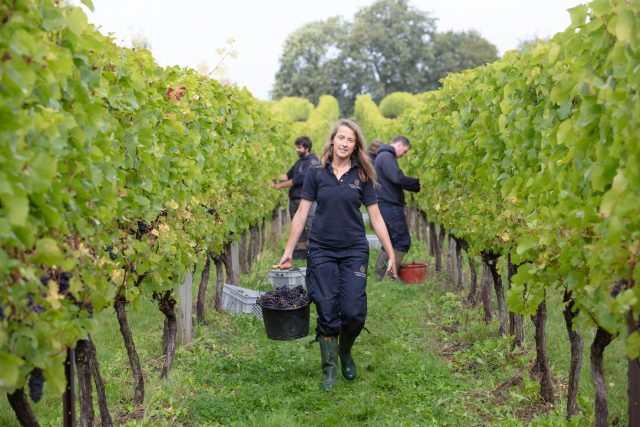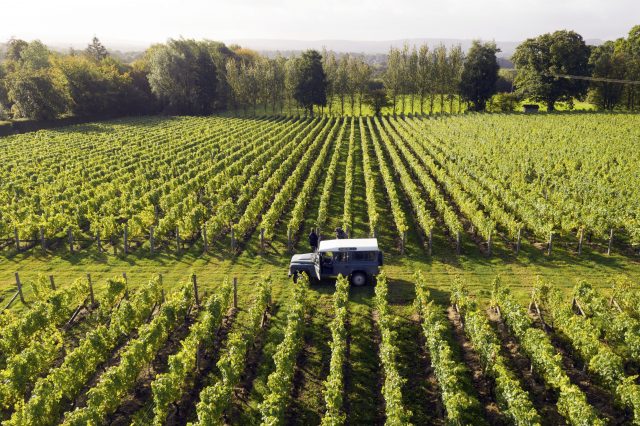This website uses cookies so that we can provide you with the best user experience possible. Cookie information is stored in your browser and performs functions such as recognising you when you return to our website and helping our team to understand which sections of the website you find most interesting and useful.
Could shoppers face an English fizz shortage in 2022?
Pre-Covid, commentators were predicting an oversupply of English sparkling wine, but now it’s thought that producers may run out of fizz in 2022.

Speaking to db back in November 2019 – just months before the pandemic struck the UK – one prominent English wine producer predicted “a lot of casualties” in the sector as he forecasted a production excess within five years.
Observing a collection of new entrants with big volume production plans in the English wine industry, Richard Balfour-Lynn of Kent’s Hush Heath Estate told db, “If we carry on the way we are in England, then we will have a massive oversupply”.
His fears were based on an unusually large (and high-quality) 2018 vintage, which had yielded the equivalent of 13 million bottles of sparkling and still wine, at a time when sales for the previous year were somewhere between 3-4m bottles.
But today, the situation seems to be reversing. In an email exchange last month with Wines of Great Britain (WineGB) CEO, Simon Thorpe MW, he noted that “various pieces of feedback” suggest “a big year for sales in 2021, even compared to the 30% growth in 2020.”
Among these sources of sales are those through UK supermarkets, which Thorpe said were up “circa 50%”, which comes in addition to “the direct to consumer channel”, which “looks to have continued its sharp rise in 2021 with vineyards reporting extremely high visitor numbers and online sales.”
With 2020 English wine and fizz sales totalling 7.1m bottles, should the market grow as much as 50% in the past year, then it’s possible sales will surpass the 10m mark, meaning that the UK industry could be producing less than is being consumed.
Such a thought is based on annual production in the last four years (2018-2021) being roughly 10m bottles, with Thorpe pointing out that the 2021 harvest is estimated to have produced 9m bottles – a similar total to 2020.
Commenting on such supply and demand trends, he said, “It isn’t beyond the realms of possibility for 2021 to produce figures where sales exceeded supply.”
He also recorded growing exports of English fizz, picking out one Nordic nation in particular.
Noting that Norway is the English wine industry’s largest export market, he said that sales through the monopoly, Vinmonopolet, grew by 85% in 2021 to a total volume of 155,000 bottles, with a total value of £4.6m at retail prices.
While he said that he doesn’t expect this growth “to be replicated to quite such an extent in other markets, it’s a positive sign that, where the category has established a foothold, there is clearly strong consumer demand”.
He also said that he’d have a clearer picture of market trends when the official sales figures for English fizz in 2021 are released in around one month’s time.

Meanwhile, the UK’s leading English sparkling wine brand, Nyetimber, achieved a record year in 2021 in both sales and production.
Sales in 2021 were up by 55% compared to the previous year – which included a growth of 89% in Europe – while it harvested its largest ever vintage.
As a result, the brand’s sparkling rosé sold out by August last year, while its Classic Cuvée had to be placed on allocation by the end of 2021 due to “unprecedented demand”, according to Nyetimber.
Nyetimber said that it was on course to produce up to 2 million bottles by 2030, cementing its position as the UK’s largest English sparkling wine brand by volume.
However, with a large amount of plantings still yet to reach maturity in the UK, and the market expected to grow steadily over the longer term, it is felt that if there is any English fizz shortage, it will be a temporary one.

